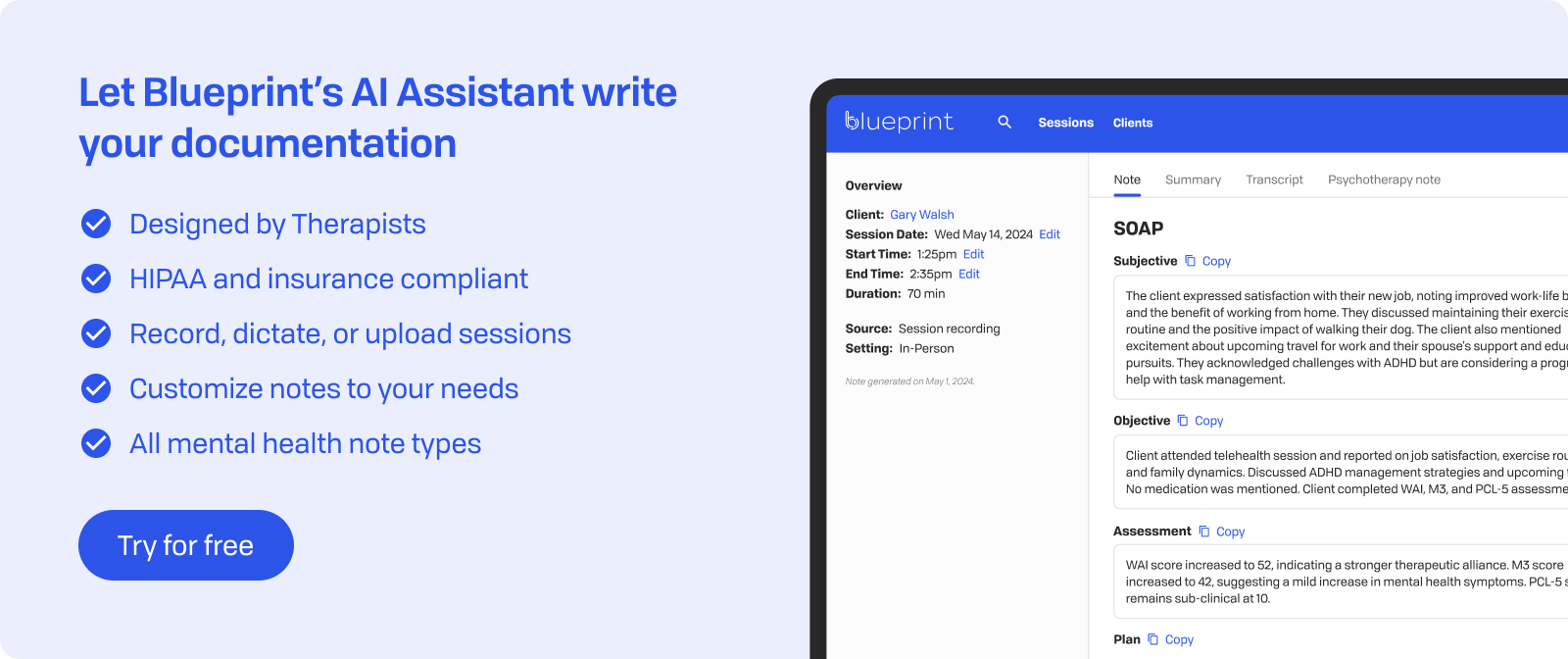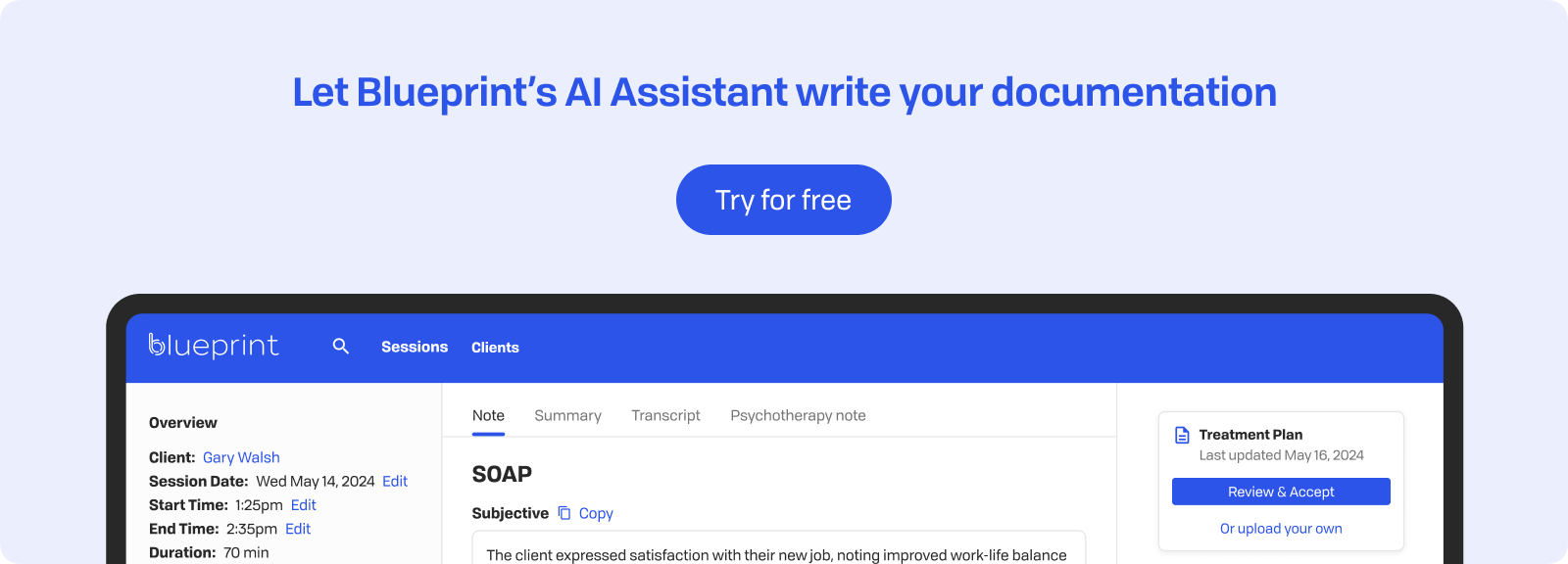
In Brief
Have you ever watched a client nod along during a session, seemingly understanding that the content of their thoughts might be contributing to their emotional difficulties, yet leave the session continuing to engage in the same type of self-talk and negative thoughts? Sometimes cognitive understanding alone doesn't lead to lasting change. The power of behavioral action can make a big difference.
Many of us know the experience of providing therapy to clients who grasp concepts intellectually but struggle to turn that understanding into real change. They might recognize their negative thought patterns or acknowledge their fears as irrational, yet stay stuck in the same cycles. This gap between knowing and doing presents one of the most challenging aspects of therapy.
A powerful CBT technique bridges this divide by turning therapy into a laboratory for life. Instead of just talking about change, it invites clients to explore and engage in experiences actively. This approach turns abstract discussions into concrete experiences that can significantly alter how clients view themselves and their world.
Understanding Behavioral Experiments
Behavioral experiments serve as a core tool in cognitive behavioral therapy, testing beliefs through real-life experiences. Unlike traditional homework assignments, these experiments focus on curiosity rather than compliance. They encourage reflection instead of merely following therapeutic directives.
At their core, behavioral experiments treat thoughts and beliefs as hypotheses to test. Clients design and perform specific actions to gather real-world data about their assumptions. This empirical approach helps them see whether their beliefs hold up under scrutiny.
The beauty of behavioral experiments lies in their collaborative nature. Therapist and client work together to develop predictions, design tests, and examine results objectively. This process turns clients from passive recipients of therapeutic wisdom into active investigators of their own lives.

When to Use Behavioral Experiments
Behavioral experiments become particularly useful when clients hold onto beliefs that resist change through discussion alone. These interventions work best in clinical situations where action can provide more powerful evidence than words.
Challenging maladaptive or rigid beliefs is a primary reason to use behavioral experiments. When clients express absolute statements like "Nobody likes me" or "I always fail," these experiments offer concrete ways to test these assumptions. Look for beliefs containing words like "always," "never," "should," or "must" – these often signal rigid thinking patterns ready for experimentation.
Working with anxiety, phobias, or depression creates ideal conditions for behavioral experiments. Clients with these conditions often avoid situations based on catastrophic predictions. For instance:
- Anxiety: Testing beliefs about worst-case scenarios through gradual exposure
- Phobias: Examining predictions about feared objects or situations
- Depression: Challenging beliefs about inability to enjoy activities or connect with others
Exploring social fears and cognitive distortions provides another important application. Social anxiety often involves untested assumptions about others' judgments or reactions. Behavioral experiments allow clients to gather actual data about social interactions rather than relying on anxious predictions.
The timing is as important as the presenting issue. Consider behavioral experiments when clients show readiness to connect their cognitive processes to their actions, express curiosity about their assumptions, or feel frustrated with being "stuck" despite understanding their patterns intellectually. The key is to match the experiment to both the client's specific beliefs and their current capacity for change.
Designing Effective Experiments
Creating meaningful behavioral experiments involves thoughtful collaboration between therapist and client. The most impactful experiments come to life when clients actively participate in their design, making the tasks personally relevant and manageable.
Collaborative planning with client input sets the stage for effective experiments. Engage your client to identify specific situations where their beliefs feel strongest. Encourage them to suggest ways to test their assumptions that fit naturally into their daily life. This partnership boosts engagement and helps clients feel invested in the process rather than just following therapeutic instructions.
Defining clear hypotheses turns vague worries into testable predictions. Work with clients to create specific "If X happens, then Y will follow" statements. For example:
- Instead of "People will judge me," try "If I speak up in the meeting, then everyone will think I'm stupid."
- Rather than "I can't handle anxiety," use "If I feel anxious at the store, then I will have a panic attack and need to leave."
- Replace "Nothing is enjoyable" with "If I go for a walk in the park, then I will feel no pleasure or improvement in mood."
Choosing tasks that are achievable and safe ensures experiments challenge beliefs without overwhelming clients. Start with experiments likely to succeed while still testing the core belief. Consider factors like:
- Current anxiety level: Match the difficulty to what feels manageable.
- Available support: Design experiments clients can complete independently.
- Practical constraints: Account for time, location, and resource limitations.
- Safety considerations: Ensure no physical or emotional harm could result.
The best experiments feel like gentle stretches rather than impossible leaps.

Processing Results in Session
The real insight from behavioral experiments comes when you and your client look at what actually happened compared to what they thought would occur. This discussion turns raw experience into lasting cognitive change.
Reviewing outcomes objectively with clients requires a structured approach that focuses on observable facts rather than interpretations. Guide your client through these key questions:
- What specifically happened? Note concrete behaviors and responses. Encourage the client to share details and the entire story to so you can help them process the entire experience.
- How did others actually react? Record specific words, actions, or expressions.
- What physical sensations occurred? Observe anxiety levels, physical symptoms, or comfort.
- How long did feelings last? Measure the duration of distress or discomfort.
Highlighting differences between feared outcomes and reality creates significant learning moments. Help clients recognize the gap between their worst-case predictions and what truly happened. For example, if a client feared "Everyone will laugh at me," but received neutral or positive feedback, make this contrast clear. Use visual aids like simple charts comparing predictions to outcomes to make the evidence undeniable.
Reinforcing learning and adjusting beliefs accordingly strengthens the experiment's impact. Work with your client to:
- Identify surprise elements: What happened that they didn't expect?
- Extract general principles: What does this teach about similar situations?
- Modify original beliefs: How might they reword their assumption based on evidence?
- Plan follow-up experiments: What related beliefs could they test next?
Remember to validate any distress experienced while emphasizing the courage it takes to challenge long-held beliefs. This balanced approach respects their experience while encouraging cognitive flexibility.

Therapist Role in Supporting Experiments
As a therapist, your approach significantly impacts how clients engage with behavioral experiments. Present these experiments with genuine curiosity rather than predetermined outcomes to encourage authentic exploration.
Modeling curiosity and nonjudgment helps create a safe environment for learning. Show genuine interest in what your client will learn, regardless of the outcome. Use phrases like "I wonder what you'll find out" rather than "This will prove your thoughts wrong." When experiments don't go as planned, respond with interest in what this reveals rather than disappointment. Your genuine curiosity encourages clients to view their experiences with openness instead of self-criticism.
Providing structure and accountability ensures experiments move from ideas to action. Consider these supportive strategies:
- Create written experiment plans: Document the hypothesis, method, and predicted outcome together.
- Schedule check-ins: Set specific times to discuss progress between sessions.
- Problem-solve barriers: Anticipate obstacles and develop backup plans.
- Track attempts: Use simple logs to record when and how experiments were conducted.
Ensuring pacing matches client readiness prevents overwhelm and builds confidence. Start with manageable experiments, even if they seem too easy. Success with smaller challenges builds the courage needed for bigger ones. Look for signs of readiness such as expressing interest in outcomes, showing frustration with current patterns, or suggesting ways to test beliefs. Conversely, respect hesitation or anxiety as signals to slow down or adjust the experiment's scope.
Your role involves balancing gentle encouragement with respectful acceptance of each client's pace, creating conditions where genuine learning can take place.
Pitfalls and Ethical Considerations
Behavioral experiments can offer valuable opportunities for change but require careful attention to client safety and ethical practice. The enthusiasm for testing beliefs must always be balanced with professional responsibility and genuine care for client wellbeing.
Avoid placing clients in unsafe or overwhelming situations by carefully assessing each experiment's potential impact. Watch for these warning signs:
- Physical safety concerns: Ensure experiments do not result in injury or harm.
- Emotional overwhelm: Be aware when anxiety levels exceed therapeutic benefit.
- Social consequences: Consider potential damage to relationships or reputation.
- Re-traumatization risk: Avoid experiments that might trigger past trauma.
Managing resistance or avoidance with empathy involves recognizing that hesitation often signals important information. When clients express reluctance, explore what specific fears arise. Sometimes resistance indicates the experiment needs adjustment rather than abandonment. Validate their concerns while gently exploring whether avoiding the experiment maintains their problematic beliefs. Remember, forcing experiments violates client autonomy and damages therapeutic trust.
Documenting process and outcomes for continuity of care ensures ethical practice and treatment effectiveness. Record:
- Original hypothesis and rationale: Clearly document what belief was tested.
- Experiment design and safety considerations: Explain how you ensured client wellbeing.
- Actual outcomes versus predictions: Provide objective data about what occurred.
- Client's processing and insights: Note their interpretation of results.
- Follow-up plans: Outline next steps based on findings.
This documentation protects both client and therapist while providing valuable information for future treatment planning. Clear records also help if another clinician needs to continue the work, ensuring experiments build meaningfully on previous efforts.

Key Takeaways
Behavioral experiments shift therapy from passive conversation to active engagement outside of session. These structured tests of beliefs create significant opportunities for change that traditional talk therapy might not achieve. The collaborative approach in designing and implementing experiments ensures both safety and personal relevance, making the learning more meaningful and lasting.
The strength of behavioral experiments lies in their capacity to provide real-world evidence. Instead of relying on imagination or theoretical scenarios, clients gather concrete data about their assumptions. This direct experience often proves more persuasive than any therapeutic insight, especially when deeply held beliefs are challenged.
Key benefits that arise from well-executed behavioral experiments include:
- Emotional shifts and relief: Clients feel immediate emotional changes when fears are disproven through direct experience.
- Skill development: Practicing in real situations naturally builds confidence and competence.
- Cognitive flexibility: Testing assumptions creates openness to new perspectives and interpretations.
- Reduced anxiety: Facing feared situations with support reduces avoidance patterns.
- Strengthened adaptive beliefs: Success experiences naturally replace negative self-concepts with realistic ones.
The process of reviewing results proves as valuable as the experiments themselves. Careful examination of what actually happened versus what was predicted fosters lasting cognitive change. This reflection helps clients recognize patterns in their thinking and develop more balanced perspectives.
When thoughtfully integrated into CBT practice, behavioral experiments offer a path from understanding problems intellectually to experiencing change firsthand. They bridge the gap between knowing and doing, creating lasting transformation through lived experience rather than theoretical understanding alone.

How Blueprint can help streamline your workflow
Blueprint is a HIPAA-compliant AI Assistant built with therapists, for the way therapists work. Trusted by over 50,000 clinicians, Blueprint automates progress notes, drafts smart treatment plans, and surfaces actionable insights before, during, and after every client session. That means saving about 5-10 hours each week — so you have more time to focus on what matters most to you.
Try your first five sessions of Blueprint for free. No credit card required, with a 60-day money-back guarantee.























